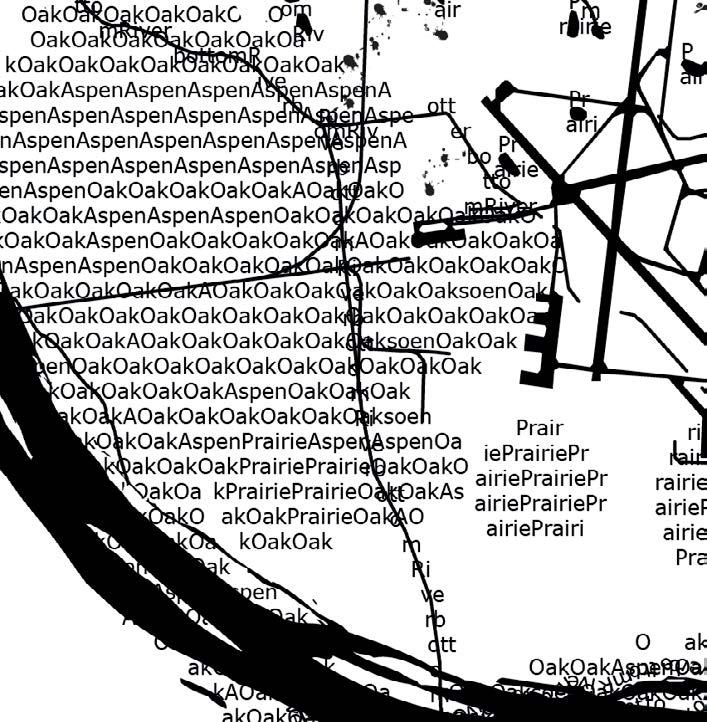
5 minute read
Vertical Gardening in a Nothern City; Speculations for Winnipeg
Rainwater harvesting irrigates the garden, while plants provide critical habitat for animals and invertibrates.
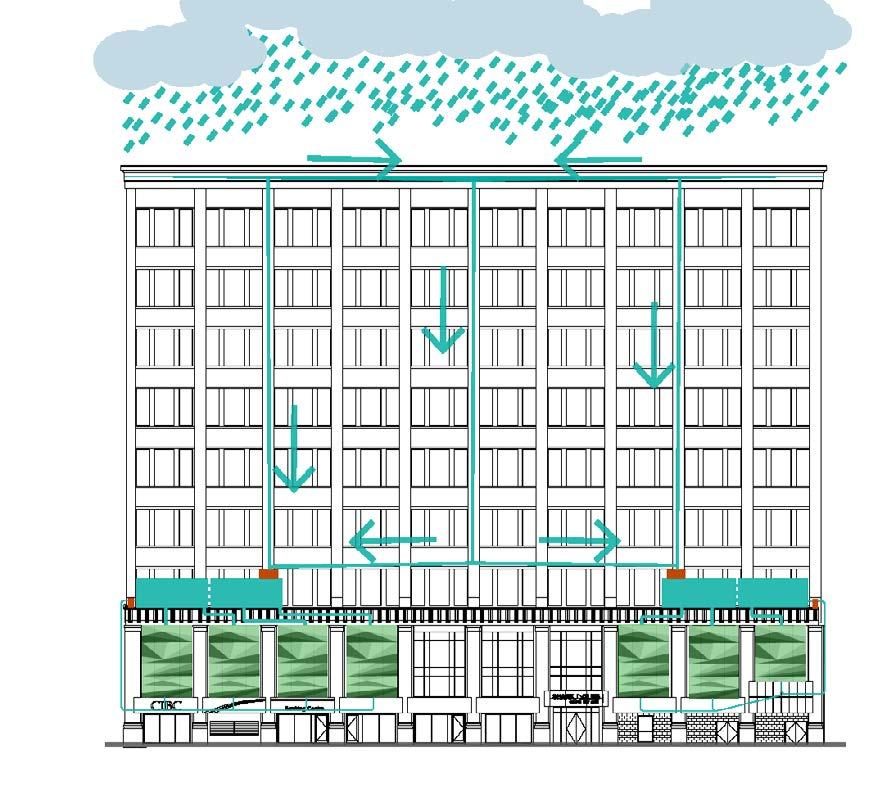
Advertisement
Vertical Gardening (Speculative)
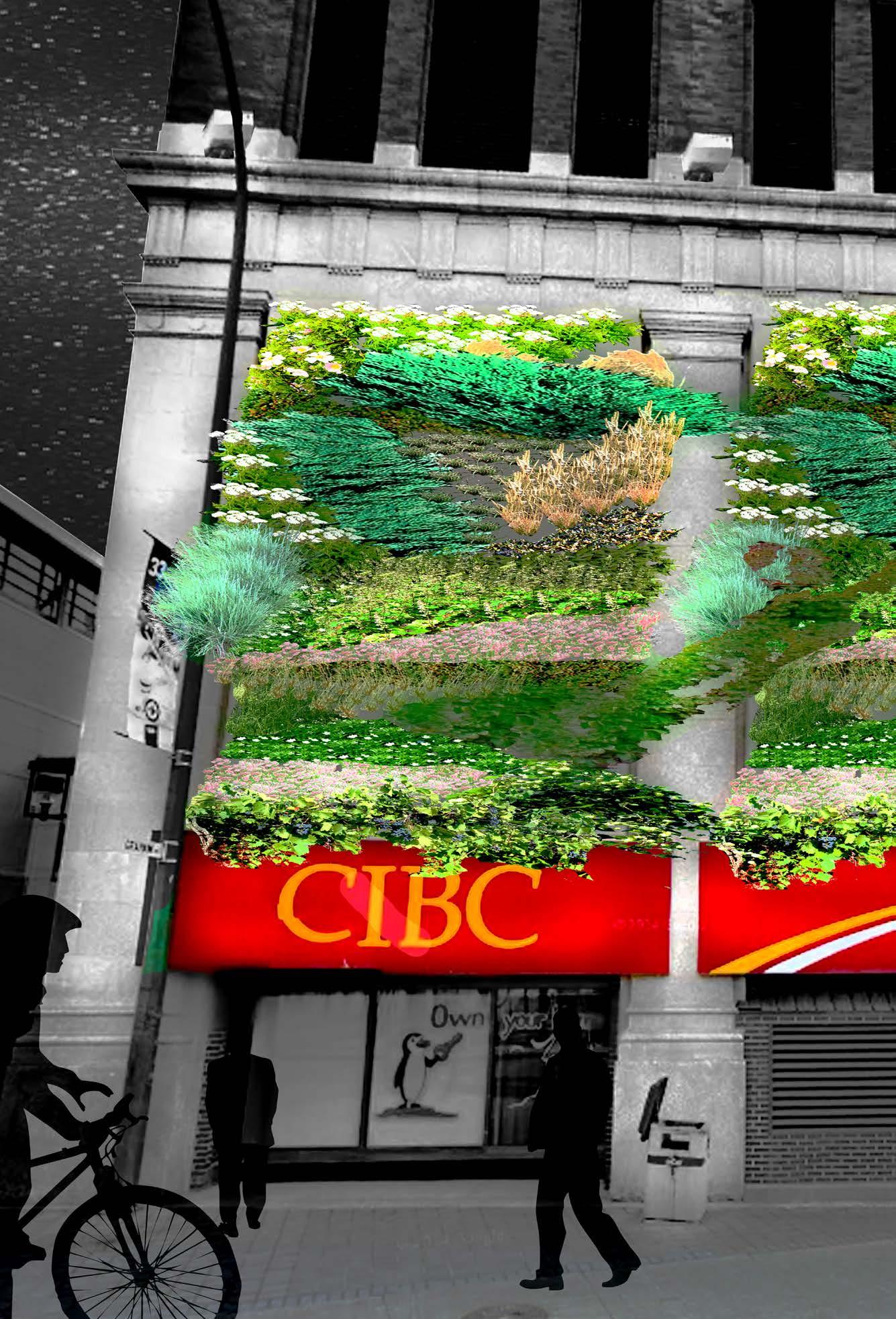
Vertical gardens are extremely limited in cold climates. Hydroponic systems are out of the question, and soil bearing designs are currently very limited. The thesis undertook the challenge of designing a vertical garden system that would thrive in cold climate urban environments. This spread shows concept sketches of the final design; a soil bearing system that is planted with native plants from various Manitoban plant communities, many of which are currently threatened or rare in Manitoba.
The design framework was undertaken within microclimate conditions unique to vertical gardens, as well as neighbourhood and regional (micro) climates. Parameters followed for vertical garden design in Winnipeg are: to ensure that lightweight materials are used, to provide insulation to protect plants from sudden temperature changes, to choose plants that grow in the region and are adapted to grow in areas with limited soil, increased wind, varying degrees of sunlight (depending on orientation), and increased pollution and salt spray depending on location.
Theories relating to the study of green walls covered in the thesis include the human ecosystem model, urban reconciliation ecology, habitat templating, the urban cliff hypothesis, and wall ecology. To read the thesis in full, click here.
Time Soil-bearing Systems
Vines

Espaliers Living Wall Biofilters (Hydroponic)

Hydroponic Felt Systems
Abundance
Research was conducted into current and historic vertical garden designs and compiled into the timeline seen above. It was found that vertical gardening has been a part of city life for a very long time, but a recent surge in technological advancement of the systems used has resulted in more projects and more awareness from the public.
Exploration of habitat templates was ciritcal to the process of designing the vertical garden. Many different types of habitats were studied both through academic papers and personal observation. Focus was placed on cliff analysis and site visits, documented on the right. The main habitat templates referenced in the design are cliffs, the Sandy Lands at Spruce Woods Provincial Park, mixed grass prairie, prairie pothole and alvars, shown below.

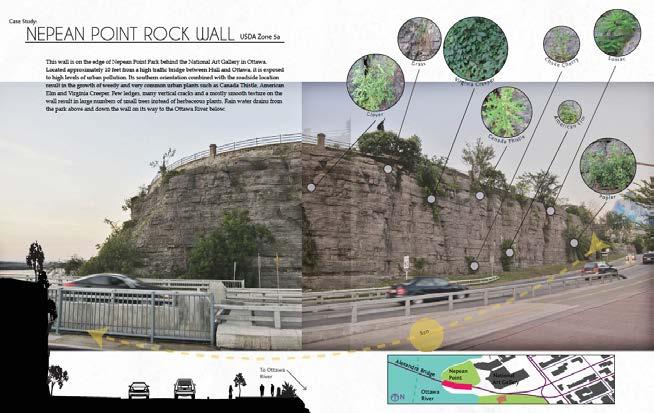
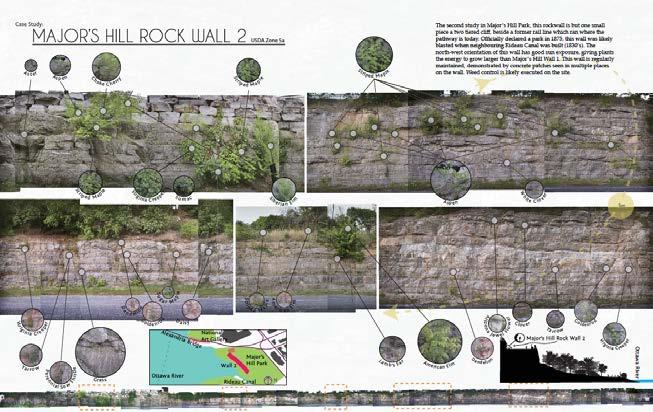
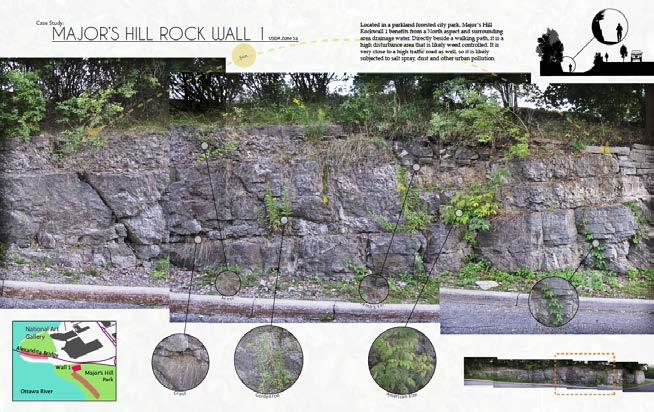
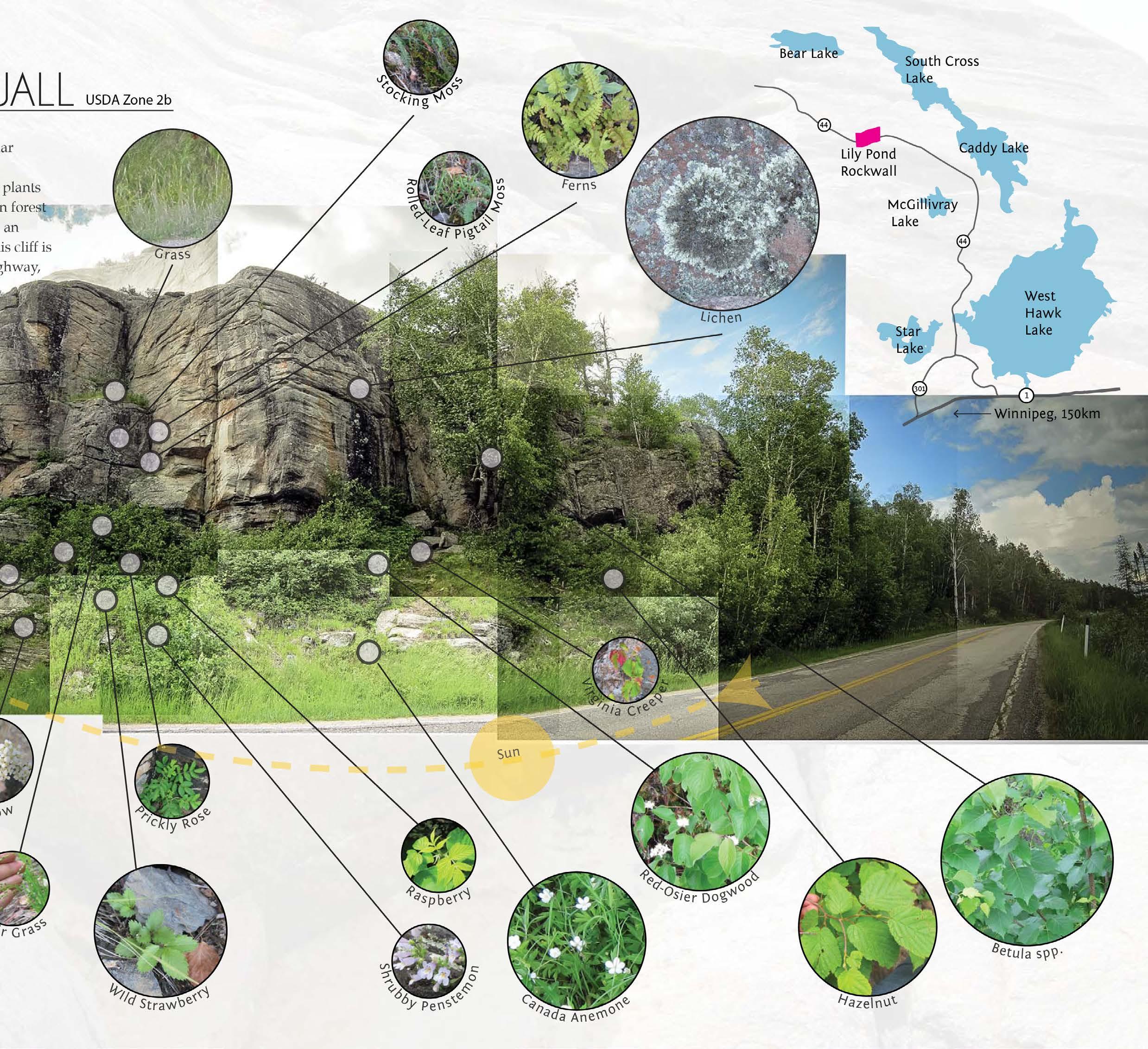
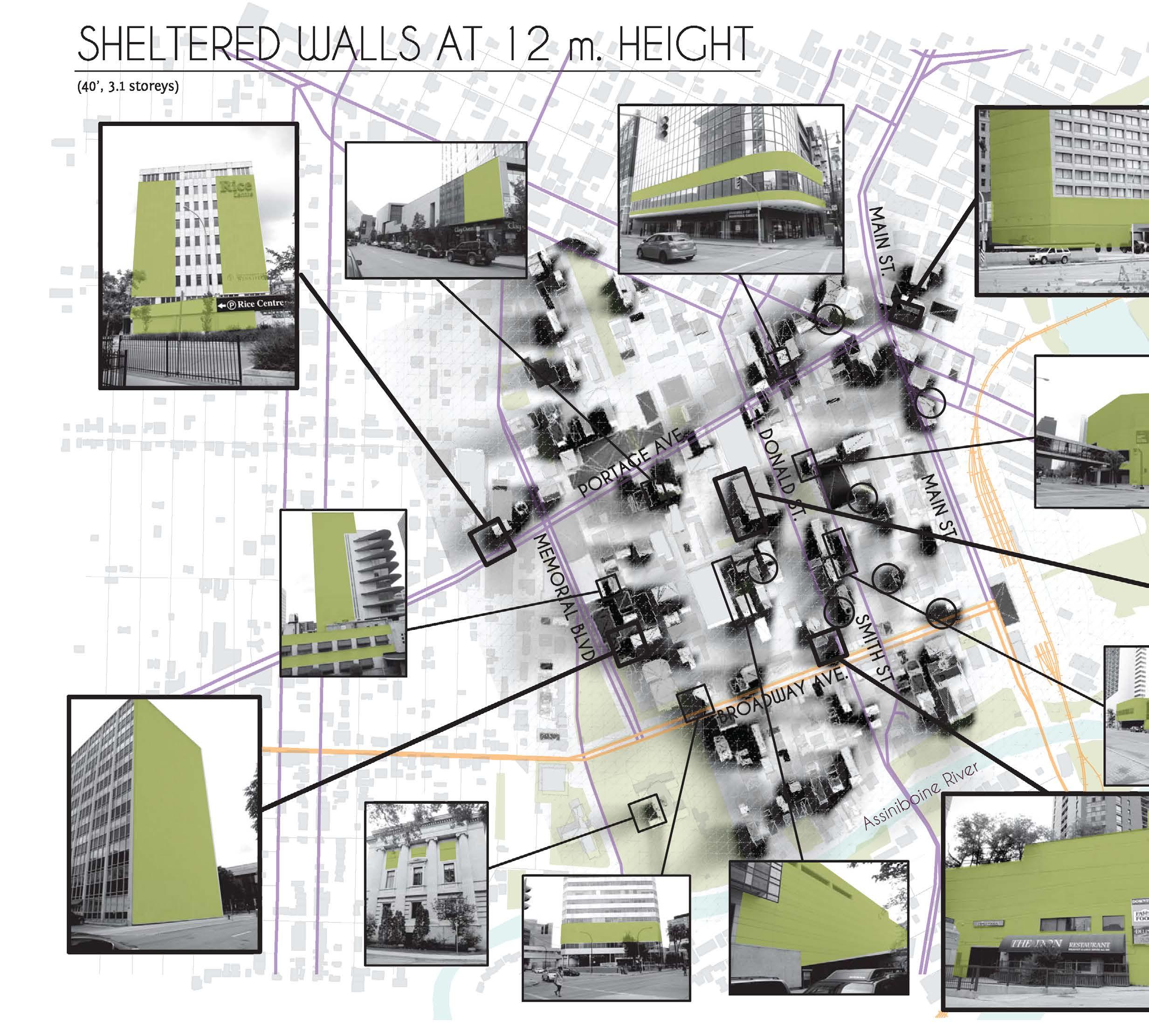

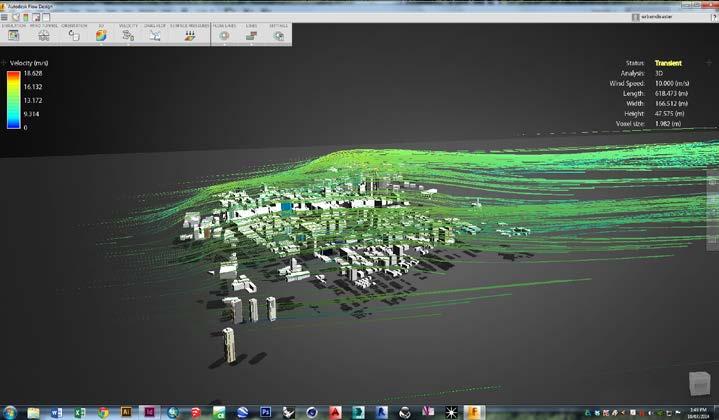
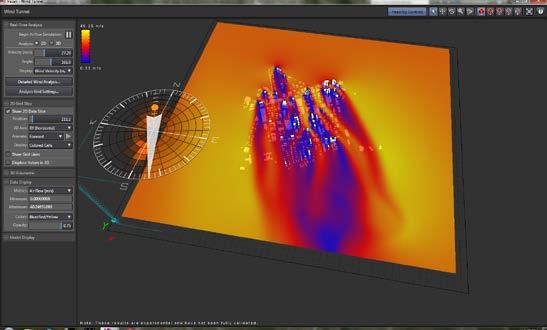
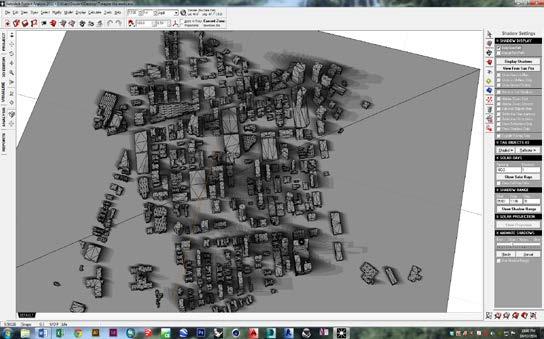
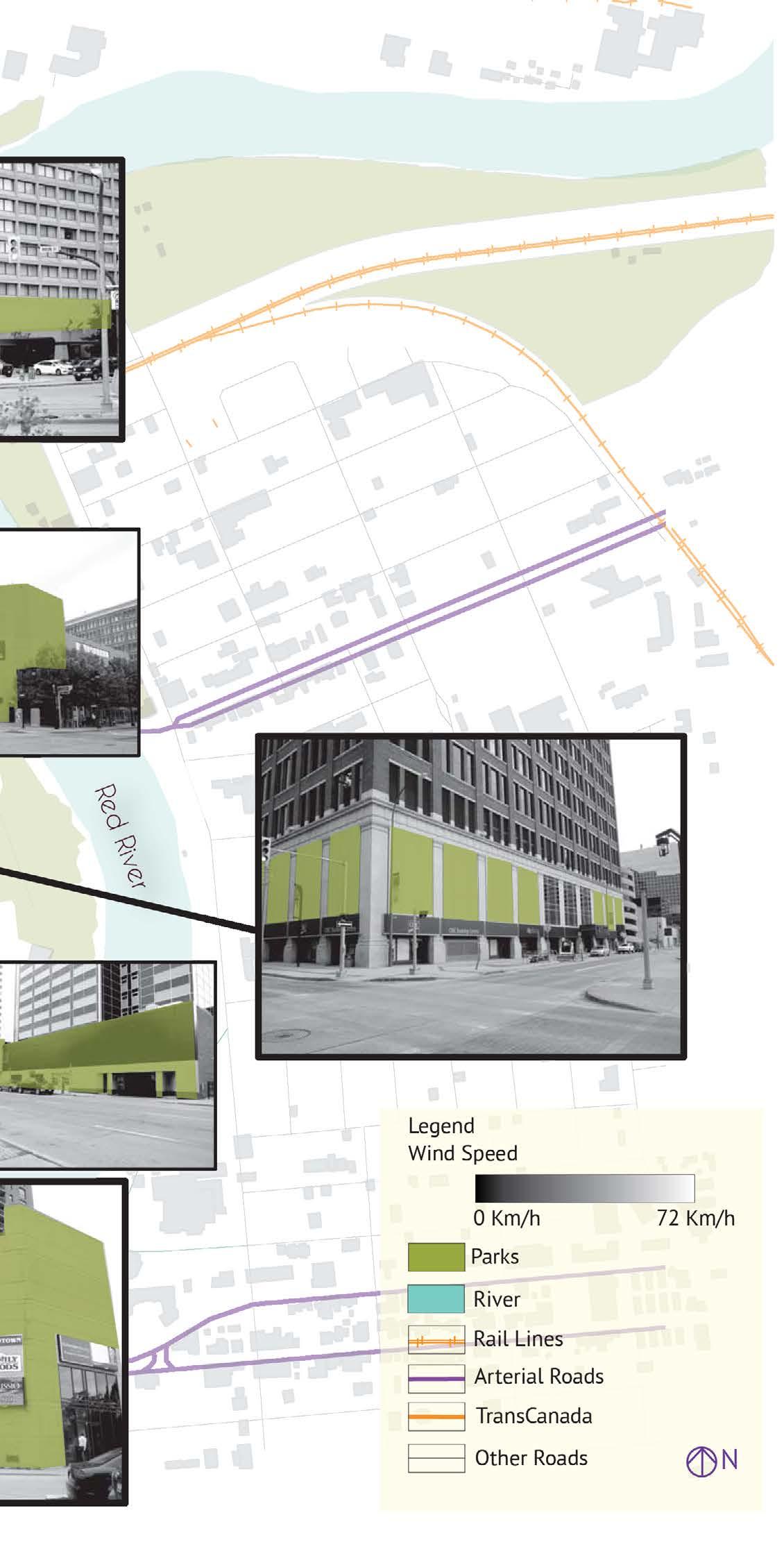
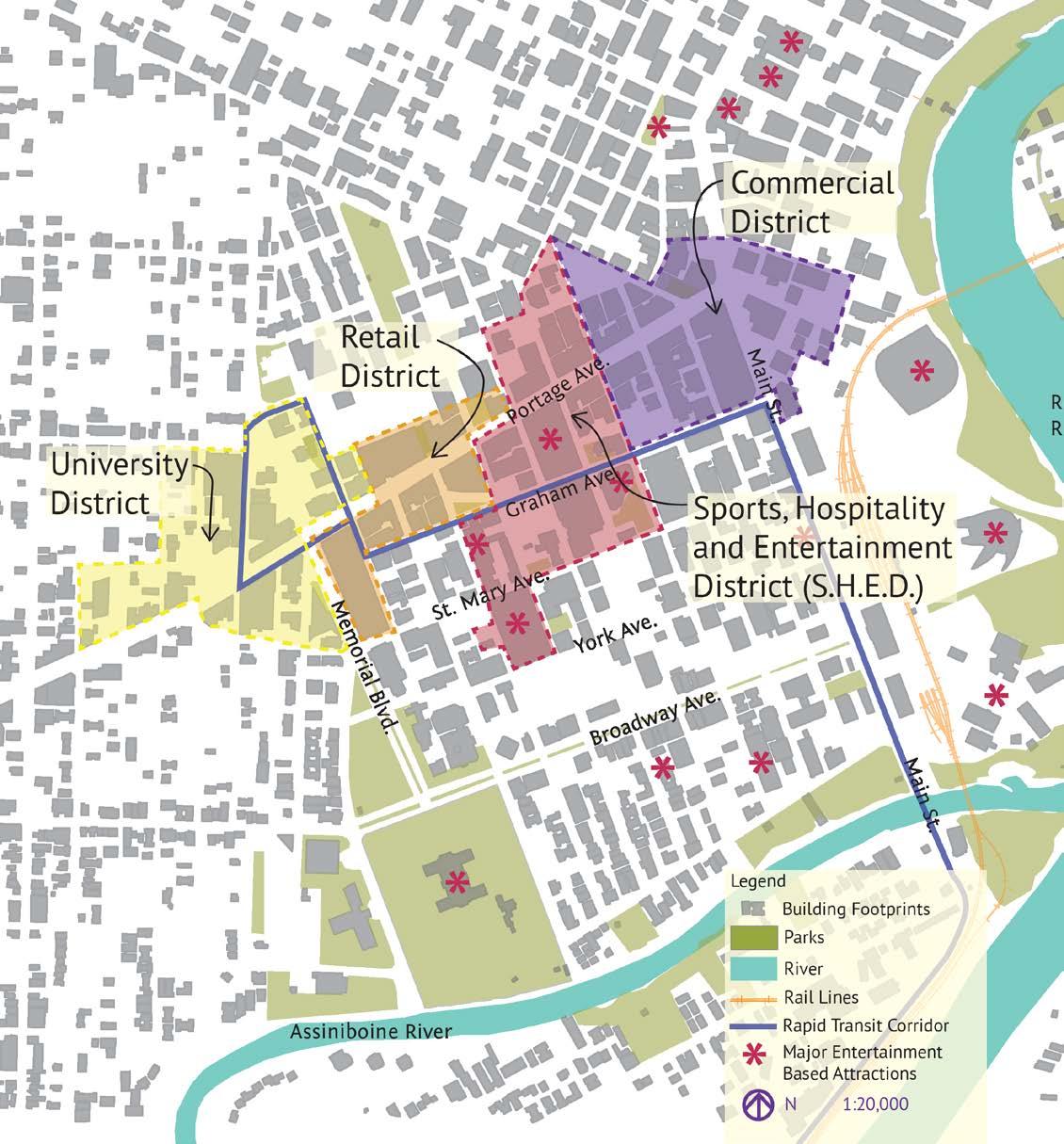
Urban analysis of downtown Winnipeg was undertaken through digital simulations using climate data and building massing. Analysis focused on optimal facades for vertical gardens at different heights. Shown to the left are the optimal locations at a 12m elevation. To the lower left are screencaptures of the modelling and simulation process undertaken. Above is a district map of the study area.
Selected facades had to be highly visible to visitors and residents of the downtown, near public transit, near entertainment venues, face North-West and are relatively protected from strong wind. The final site selected, labeled below as «City Place» fits all the criteria listed, and is a reinforced concrete structure capable of holding the extra weight of the garden.
Portage Ave. Hargrave St. City Place
Graham Ave.
Donald St.

York St.


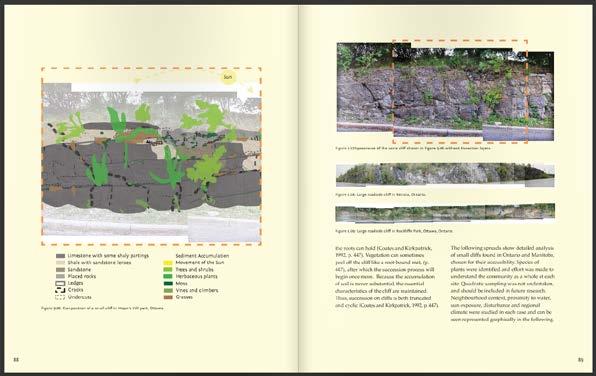
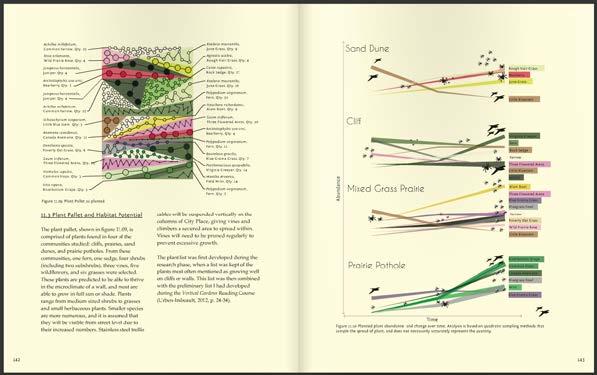
The vertical garden design is the result of folded planes that protrude at different distances in response to the length of plant roots that will grow there. The plants are selected from habitat templates that have similar characteristics to their corresponding position in the wall microclimate. Plant diversity and abundance will shift over time, the upper left is an example of how it could change. Seeds will be introduced and distributed by birds and other animals, which will change the diversity of the wall.
The proposed vertical garden will fit into existing bays of the Hargrave facade of City Place. These bays currently contain signs for businesses housed within the building, and stucco panels. The gardens
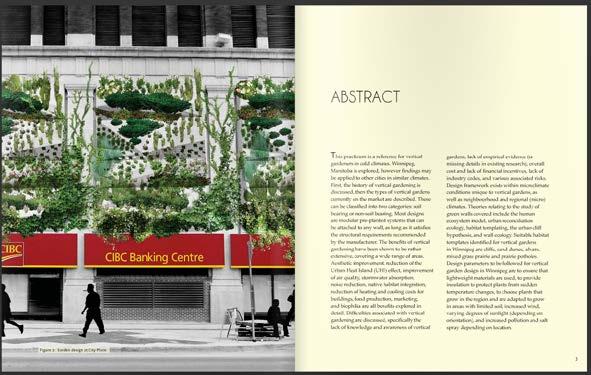


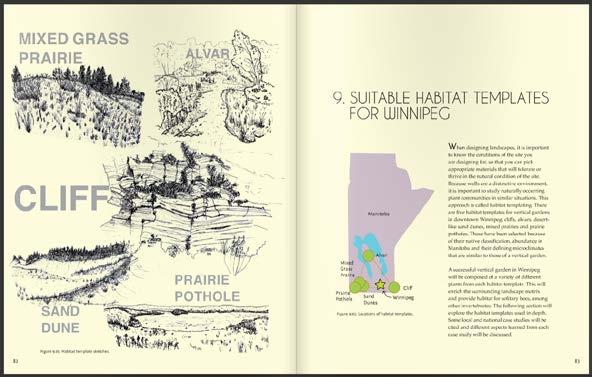
will be installed above the signs, creating a new layer of intrigue and a new, “greener” image for the businesses represented.
During the winter, the garden will be covered with a brightly coloured tarp, to protect the plants from the cold weather. Shrubs will be wrapped individually, while herbaceous plants and grasses will either be trimmed or flattened, so that the tarp accentuates the overall form of the garden, providing a dynamic and colourful break from the Winnipeg winter landscape.
The gardens at city place will be the first vertical gardens in Winnipeg to grow herbaceous plants, grasses and shrubs.
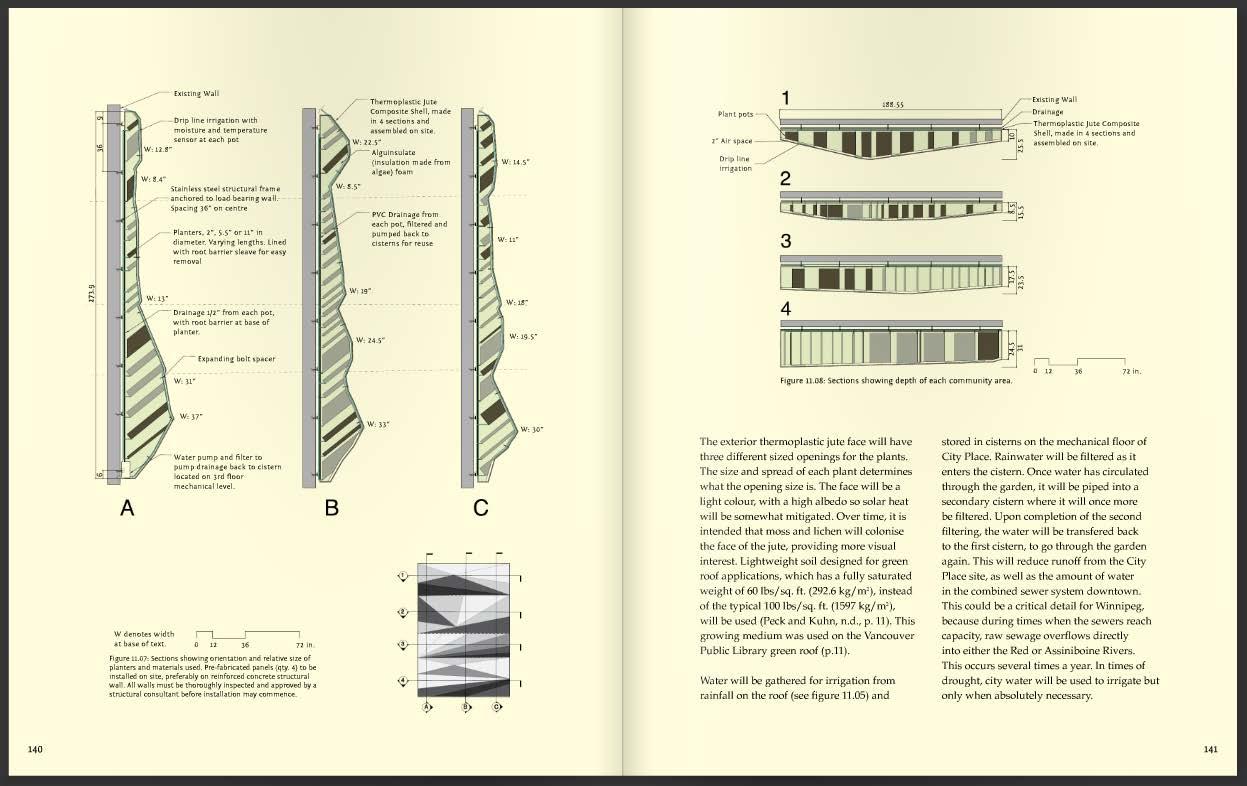
Ecological Concept Plan








